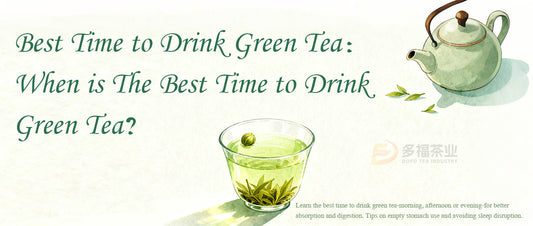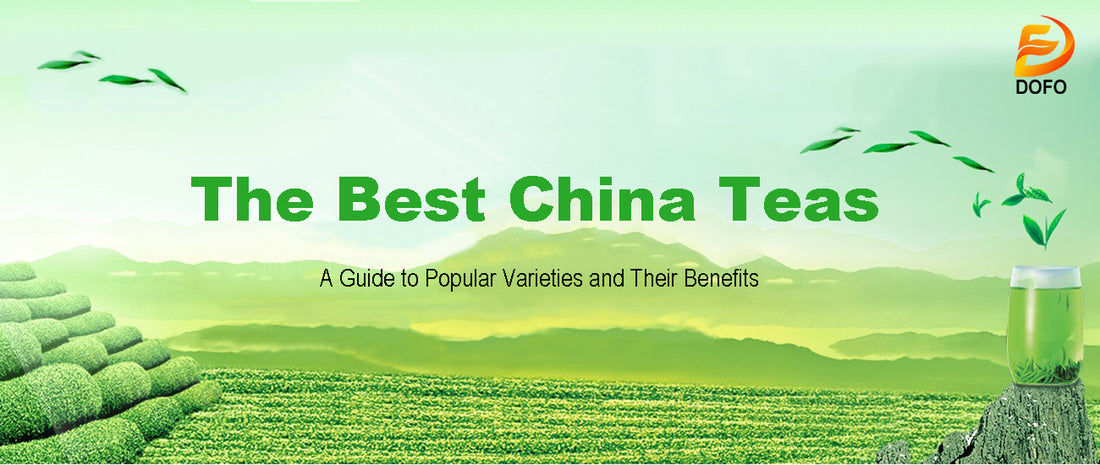
The Best China Teas: A Guide to Popular Varieties and Their Benefits
钱多福Share
Introduction to Chinese Tea
Chinese tea is an angiosperm plant.
China is the hometown of tea trees, and China is the country where wild tea trees were discovered the earliest and most.and there are various types of Chinese tea.
Tea, which began in the Shennong era, has gone through thousands of years of history with Chinese culture.
Chinese tea has made a great contribution to the health of the people on earth. The ancestor of Chinese tea is Shennong, who is also the ancestor of world tea. Chinese tea has spread all over the world, improving health, happiness, and harmony between body and mind, adding infinite charm to the concept of health and Zen tea culture.
Understanding Chinese Tea in China
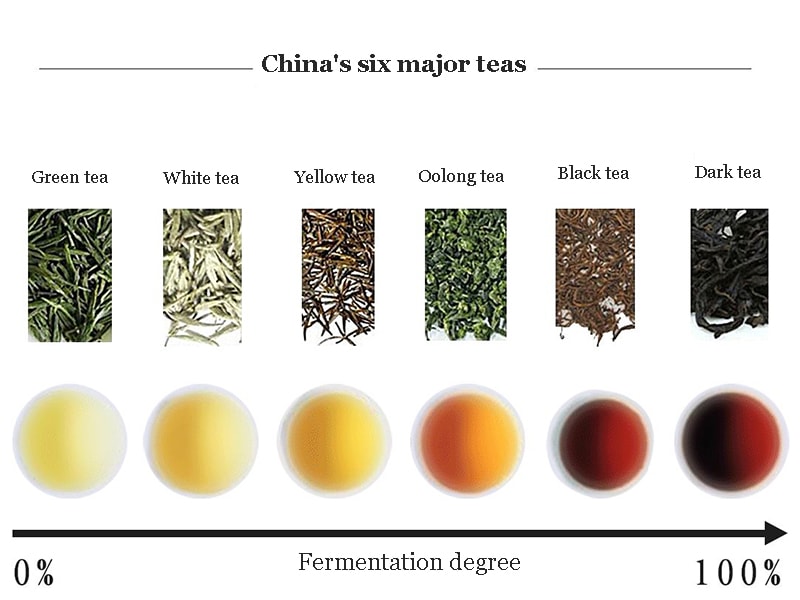
Chinese teas can be classified into six categories: white, green, yellow, oolong, black, and Hei cha(Dark).
In addition, some scholars use the "fermentation degree" to classify tea, including "non-fermented" (such as green tea), "lightly fermented" (such as white tea, yellow tea), "slightly fermented" (this classification is not common), "semi-fermented" (such as oolong tea), "fully fermented" (such as black tea) and "post-fermented" (such as dark tea).
Most Chinese teas are cultivated and consumed in China, and are commonly available in Chinese restaurants and grocery shops worldwide.
Green tea is the most common type of tea consumed in China.
Chinese Green Tea
Chinese green tea is the oldest and most common type of tea.
Green tea is made from young tea leaves and undergoes minimal oxidation.
Green tea is produced in provinces like Jiangxi, Anhui, and Zhejiang, with West Lake Dragon Well Tea being a famous variety.
Green tea is the most ancient and prominent form of tea, primarily consumed in China for thousands of years.
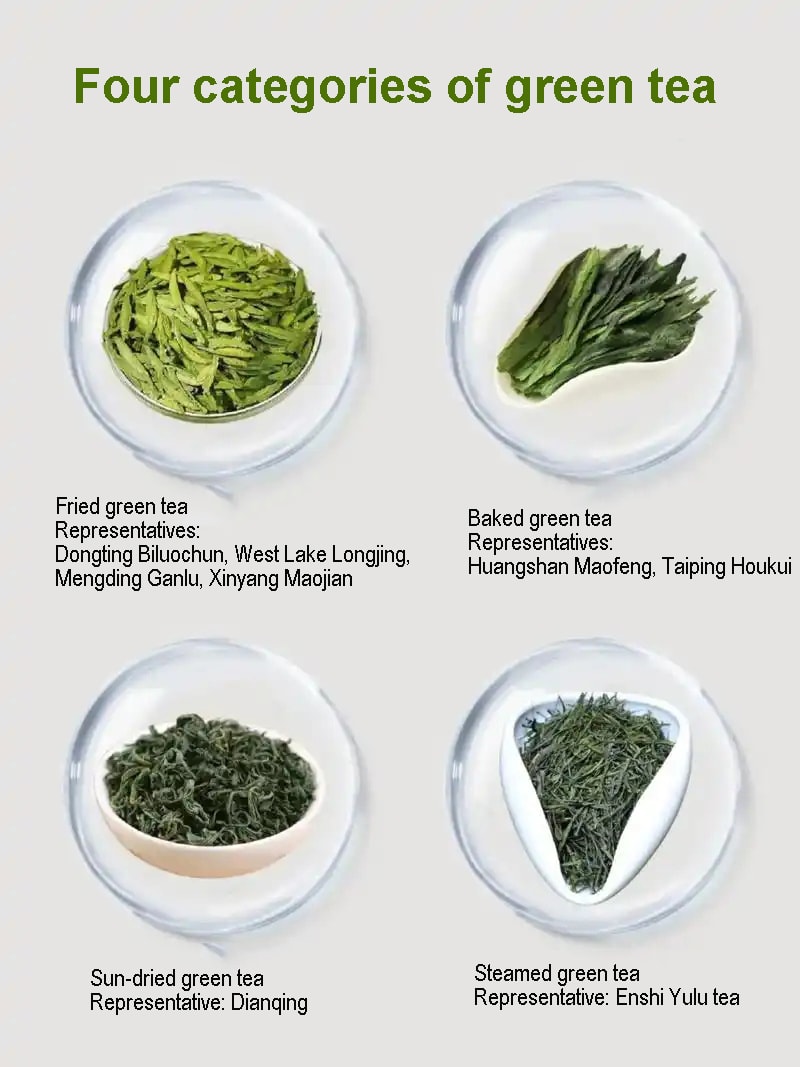
Chinese White Tea
Chinese white tea is one of the least processed teas, known for its delicate flavor and subtle aroma. It is made from the young buds and leaves of the tea plant, which are carefully harvested and then allowed to wither and dry naturally. This minimal processing helps retain the tea's natural antioxidants and health benefits.
White tea is primarily produced in the Fujian province of China, with popular varieties including Silver Needle and White Peony. These teas are prized for their light, refreshing taste and pale golden color.
White tea is believed to have numerous health benefits, such as boosting the immune system, aiding in weight loss, and improving skin health. Its gentle processing methods help preserve the tea's natural properties, making it a popular choice for those seeking a milder tea experience.
Whether enjoyed on its own or as part of a tea blend, Chinese white tea offers a unique flavor profile that is both soothing and invigorating.
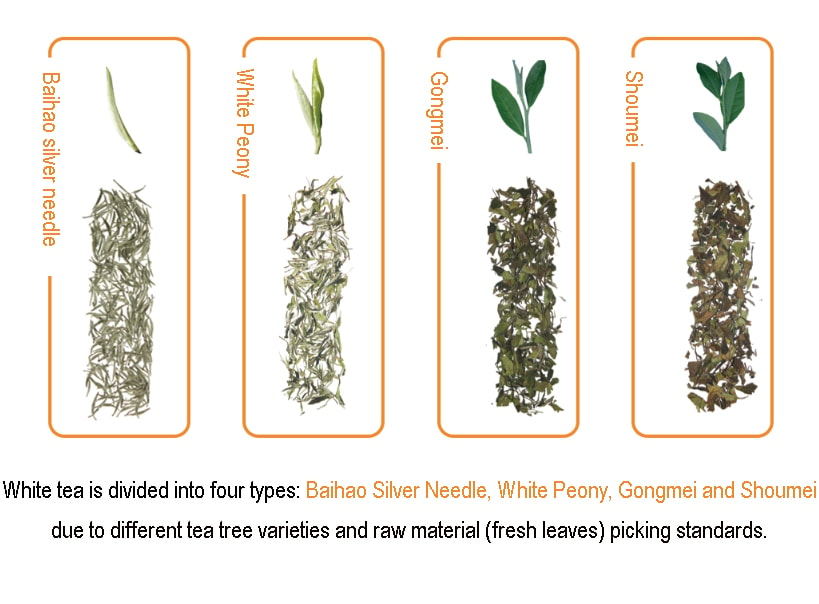
Chinese Yellow Tea
Yellow tea is a rare and expensive type of tea, accounting for less than 0.5% of China’s total tea production.
Yellow tea is similar to green tea, but with a slower drying process.
Yellow tea is good for health, reducing the risk of ingestion, loss of appetite, and obesity.
Yellow tea has a distinctive light golden color, gently sweet flavor, scent, and soft texture.
Some popular yellow teas include Junshan Yinzhen 、Beigang Maojian and Dayeqing yellow tea.
Chinese Oolong Tea
Oolong tea combines the attributes of two separate teams: green and black tea.
Oolong tea is a semi-fermented tea with a unique flavor.
Oolong tea is processed by adjusting oxidation time to bring out specific flavor characteristics.
Oolong tea can have a taste that is more green or black, depending on processing.
Oolong tea is good for health, with benefits including reducing high blood pressure and aiding digestion.
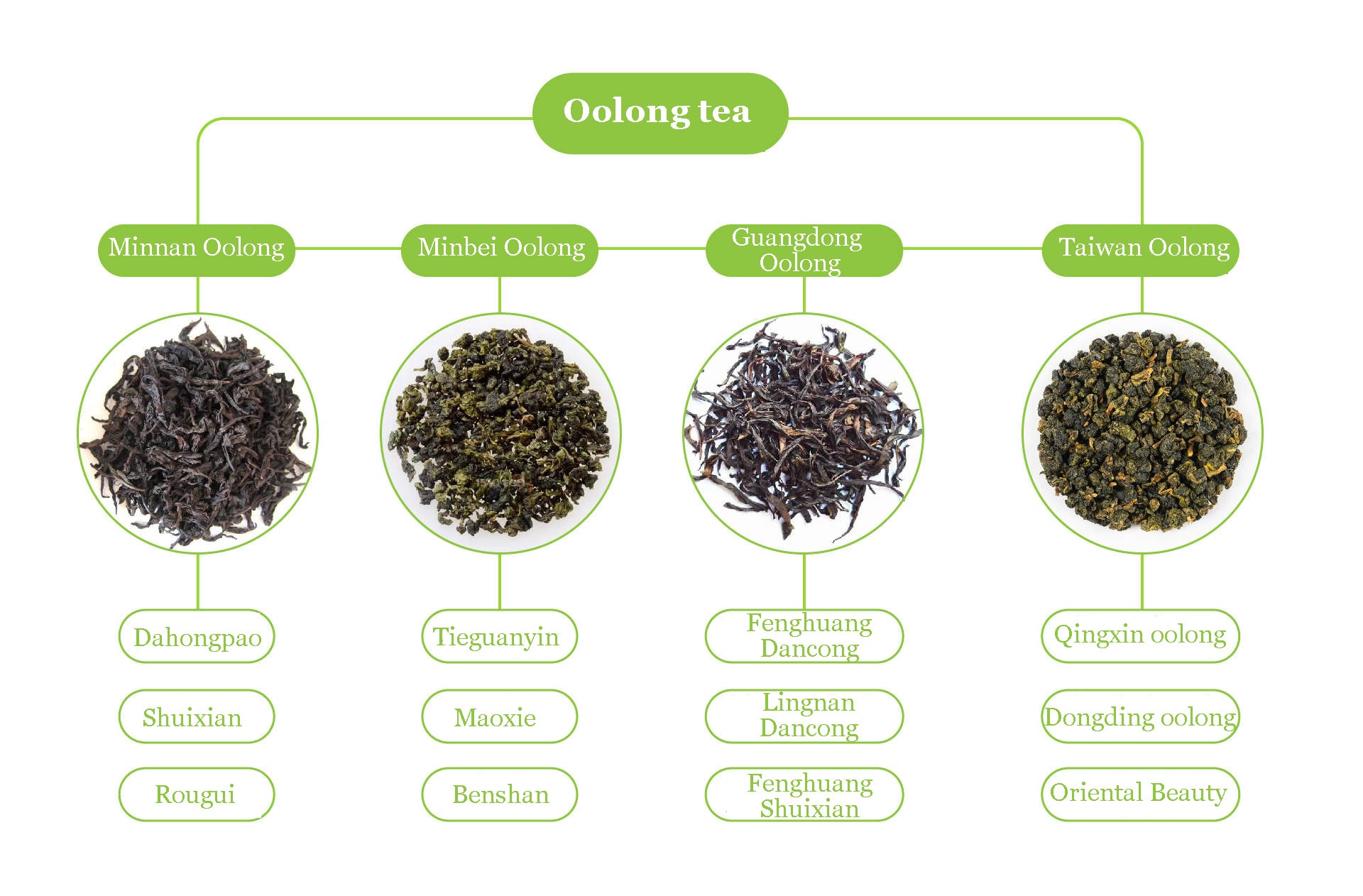
Chinese Black Tea
Chinese black tea, known as "hong cha" or "red tea" in China due to its rich, reddish-brown liquor, is a fully fermented tea that boasts a robust and bold flavor profile. This type of tea is renowned for its distinctive aroma and is often enjoyed both plain or with milk and sugar.
Black tea is produced in various regions across China, including Fujian, Yunnan, and Anhui provinces, each offering unique varieties such as Keemun and Lapsang Souchong. The production process involves withering, rolling, fermenting, and drying the mature leaves, which results in the tea's characteristic dark color and stronger flavor.
In addition to its appealing taste, Chinese black tea offers numerous health benefits. It is known to aid digestion, warm the stomach, and provide a refreshing energy boost. However, it is recommended to consume black tea in moderation, especially for individuals with specific health conditions.
Whether enjoyed as a morning pick-me-up or a soothing afternoon beverage, Chinese black tea provides a rich and satisfying experience for tea enthusiasts worldwide.
Chinese Dark tea
Chinese Dark tea, known as "hei cha"in China.
Dark tea is possibly the least well-known tea.
Dark tea is made from the post-fermentation of plants, with a rich ruby color and a moderate yet filled texture.
The most famous variety of dark tea is Pu-erh, which is traditionally produced in the Yunnan Province of China. Pu-erh is often compressed into round cakes, bricks, or tuos, and its flavor can develop and improve over time, much like fine wine.Known for its deep, complex flavor and smooth texture, Pu-erh tea is a popular choice among tea connoisseurs. It can be enjoyed as a young tea with a fresh, earthy taste or aged for a more mellow and refined flavor.
Other teas
Herbal tea is made from herbs with healthcare functions and curing effects.
Herbal tea is not made from tea plants, but from other plants like rooibos, honeybush, and mint.
What is the most popular Chinese tea?
There are ten famous teas in China.
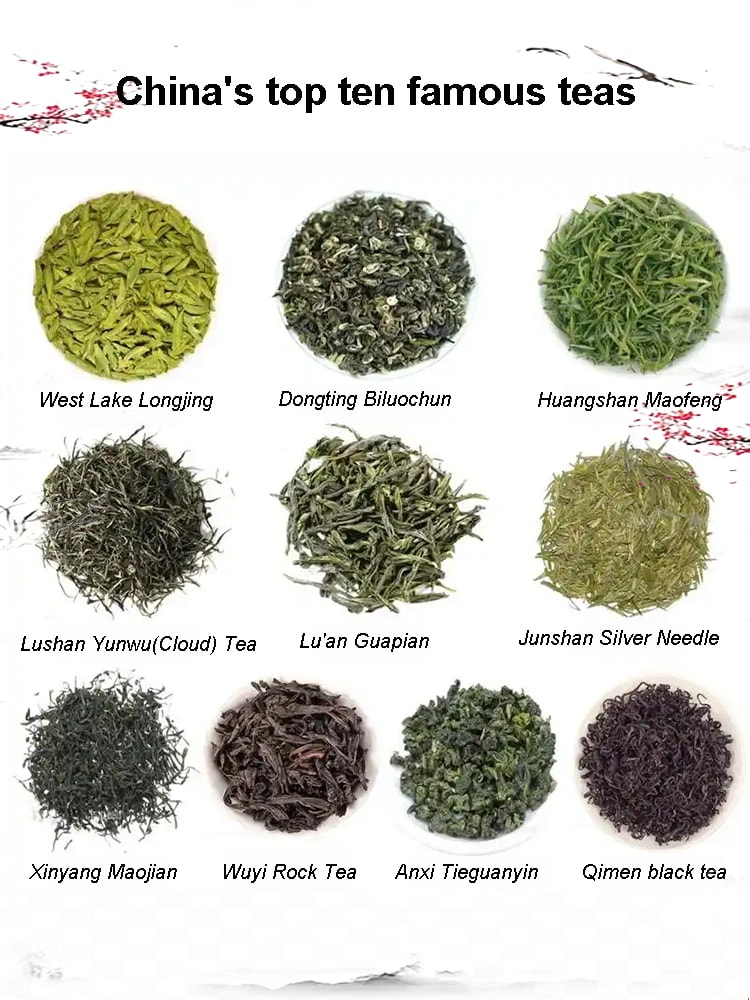
The top ten famous Chinese teas include: West Lake Longjing, Dongting Biluochun, Xinyang Maojian, Junshan Yinzhen, Huangshan Maofeng, Wuyi Rock Tea, Keemun Black Tea, Duyun Maojian, Lu'an Guapian, Anxi Tieguanyin. These teas play an important role in Chinese tea culture, and each is famous for its unique quality, taste and historical and cultural background.
West Lake Longjing
Produced in the mountains surrounding West Lake in Hangzhou, Zhejiang, it is famous for its "green color, rich aroma, sweet taste and beautiful shape". It is the first of the top ten famous teas in China.
Dongting Biluochun
Produced in Dongting Mountain, Taihu Lake, Suzhou, Jiangsu, the tea leaves are tightly bound and curled like snails, with a strong aroma and a fresh, mellow and sweet taste. It is the best among green teas.
Xinyang Maojian
A famous tea produced in Henan, the tea shape is as its name suggests, and it is fragrant after brewing with boiling water. Its market value ranks second in chinese tea.
Junshan Yinzhen
Produced in Junshan, Dongting Lake, Yueyang, Hunan, it is as thin as a needle, with a strong fragrance, mellow, sweet and smooth taste, and is a fine yellow tea.
Huangshan Maofeng
Produced in the Huangshan area of Anhui Province, it has a slightly curled shape, shaped like a sparrow tongue, with a fresh and elegant aroma, and a mellow and fresh taste. It is a top-grade green tea.
Wuyi Rock Tea
It has a unique rock rhyme and aroma. It is one of the traditional famous Chinese teas and is famous for its unique quality and production process.
Qimen Black Tea
Produced in Qimen County, Anhui Province, it has a high and mellow aroma, a fresh and refreshing tender fragrance, and is a treasure among black teas.
Duyun Maojian
Produced in Duyun City, Guizhou Province, the tea leaves are tender green and uniform, with a clear and high aroma and a fresh and refreshing taste. It is a top-quality green tea.
Lu'an Guapian
Produced in the Dabie Mountains area of Lu'an City, Anhui Province, it is the only tea without buds and stems, with a high and refreshing fragrance and a fresh and mellow taste.
Anxi Tieguanyin
Produced in Anxi County, Fujian Province, the tea leaves are plump and round, with a sandy green color, a long-lasting fragrance, and a mellow and sweet taste. It is the best among oolong teas.
Health Benefits of Chinese Tea
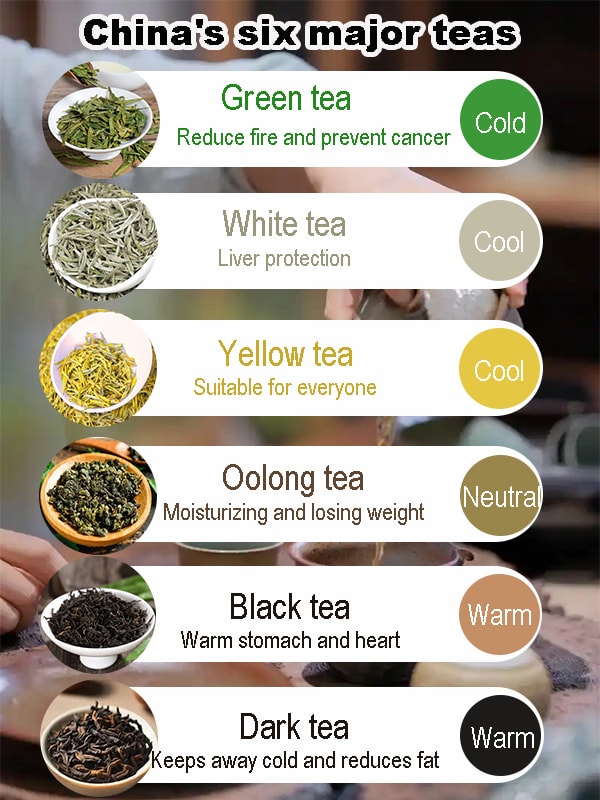
Chinese tea is not only a popular beverage but also brings a lot of health benefits and plays an important part in this country’s rich culture.
Green tea is cold in nature, reduces internal heat and prevents cancer;
White tea is cool in nature, protects the liver;
Yellow tea is cool in nature, suitable for everyone;
Oolong tea is neutral in nature, moisturizes and reduces weight;
Black tea is warm in nature, warms the stomach and protects the heart;
Dark tea is warm in nature, keeps out the cold and reduces fat.
The highest grades of white tea, yellow tea, and green tea are made from tender tea shoots picked early spring.
The more-oxidized tea, such as red or oolong tea, are made from more mature leaves.
Enjoying Chinese Tea
In some places in China, customers clean their bowls and utensils at the table by rinsing them with tea from the pot.
Chinese people tend to use a special personal tea bottle, in which water is allowed to infuse with tea leaves for hours, and sipped continuously.
Traditional Chinese tea sets consist of special clay or porcelain teapots, teacups, tea spoons, tea strainers, draining trays, tea forceps, and a large forceps.
Chinese tea houses have a long history, dating back to the Tang dynasty, and are an important part of Chinese culture.
Chinese tea is a diverse and complex world, with many different types and varieties to explore.
Whether you’re looking for a refreshing green tea or a rich and complex oolong tea, there’s a Chinese tea out there for you.




